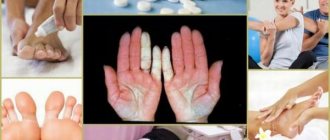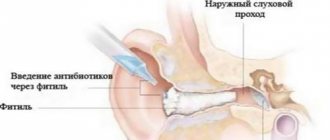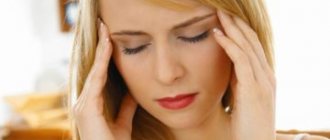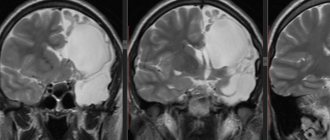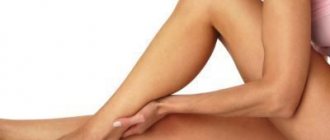A headache in the back of the head can have a number of different causes./Pixabay Headaches can range from annoying to devastating in severity. They can appear anywhere on the head.
Headache in the back of the head can have a number of different causes. Many of these causes can be identified by additional symptoms. These symptoms include the type of pain experienced and other places where the pain may be located.
Pain in the neck and back of the head
Arthritis
Arthritis headaches are caused by inflammation and swelling in the neck area. They often cause pain in the back of the head and neck. Movement usually causes more pain. These headaches can be caused by any type of arthritis. The most common are rheumatoid arthritis and osteoarthritis.
Poor posture
Poor posture can also cause pain in the back of the head and neck. Poor body alignment creates tension in the back, shoulders and neck. And this tension can cause headaches. You may feel a dull, throbbing pain at the base of your skull.
Herniated discs
Herniated discs in the cervical spine (neck) can cause neck pain and tension. It can cause a headache called cervicogenic headache.
The pain usually occurs and is felt in the back of the head. It may also be felt in the temples or behind the eyes. Other symptoms may include shoulder or shoulder discomfort.
Cervicogenic headaches may get worse when you lie down. Some people may even wake up because the pain disturbs their sleep. While lying down, you may also feel pressure on the top of your head.
Occipital neuralgia
Occipital neuralgia is a condition that occurs when the nerves running from the spinal cord to the scalp are damaged. It is often confused with migraine. Occipital neuralgia causes a sharp, aching, throbbing pain that begins at the base of the head in the neck and moves towards the scalp.
Other symptoms include:
- pain behind the eyes
- a sharp stabbing sensation similar to an electric shock in the neck and back of the head
- sensitivity to light
- sensitive scalp
- pain when moving the neck
Treatment methods
Therapy for burning sensation in the left neck, depending on the cause of its occurrence, is carried out using medications and physiotherapeutic procedures. Thus, when the front of the neck burns, doctors recommend the following medications:
- Non-steroidal anti-inflammatory drugs. They help suppress the inflammatory process and slightly relieve pain.
- Chondroprotectors. These medications allow you to restore the cartilage tissue of the vertebrae and prevent their further development.
- Calcium preparations. They are prescribed if a burning sensation in the neck on the right appears against the background of osteoporosis.
- Neurovitamins. These agents activate the restoration of damaged tissues of the nervous system.
- Local medications for inflammation pain. They can be used to treat the neck, but are not allowed to be used on the part of the head where the hair grows.
In most cases, burning in the back of the neck on the right or left can be due to the development of osteochondrosis, then the symptom can be eliminated with the help of medications quite easily.
It is worth remembering that all of these drugs cannot eliminate the very cause of the symptom. In order to directly overcome spinal disease, long treatment and recovery are required.
In addition to drug treatment, doctors recommend manual therapy, acupuncture, massage, and the use of wraps and compresses. Physiotherapeutic procedures help enhance the therapeutic effects of medications, help prevent the development of exacerbations in chronic spinal diseases, and also contribute to a favorable psycho-emotional state.
Electrophoresis copes well with pain, current treatment helps to relax muscle tissue, magnet therapy suppresses the inflammatory process well and can relieve the patient of a burning sensation in the back of the neck.
You should not self-medicate and delay visiting a doctor. This can aggravate the course of the disease and intensify the symptoms that appear. Even folk remedies must be agreed upon with the attending physician.
Pain in the back of the head when lying down
Cluster headaches
Cluster headaches are rare but extremely painful. They get their name from the "cluster periods" in which they occurred. People with cluster headaches experience frequent attacks. These periods can last weeks or months.
Cluster headaches can cause pain in the back of the head or on the sides of the head. They may worsen when lying down. Other symptoms to watch out for:
- sharp, penetrating, burning pain
- restlessness
- nausea
- nasal congestion
- drooping eyelid
- sensitivity to light and sound
Cervical migraine
An attack of cervical migraine begins with its predecessors:
- prodromal period;
- aura.
In the prodromal stage, the emotional background and general well-being change. During the aura stage, vision, sensitivity and motor functions are impaired. The main symptom is pain localized in the occipital region and moving to the frontal and temporal. When you throw your head back, dizziness begins with darkening of the eyes. The attack is accompanied by a burning sensation in the back of the head, flashing of spots, fogginess, nausea and vomiting.
At a doctor's appointment with a diagnosis.
Causes of the disease:
- cervical osteochondrosis;
- damage to cartilage tissue;
- congenital pathologies;
- injuries;
- atherosclerosis.
In the initial stages of development, symptoms appear periodically and do not significantly affect the quality of life. But if attacks appear more often, social adaptation is disrupted. The patient becomes nervous, depressed and irritable. Attacks of aggression are possible. And this affects all areas of life: work, family and leisure.
To treat the disease, anti-inflammatory, painkillers and diuretics are prescribed. The course is complemented by physical therapy, acupuncture and manual therapy.
When to see a doctor
Make an appointment with your doctor if:
- You begin to experience new headaches that last more than a few days
- your headaches interfere with your normal activities
- pain accompanied by tenderness
- You are experiencing any new changes in headache patterns
- If you develop a severe headache that is worse than ever, or if your headaches gradually get worse, you should make an appointment as soon as possible.
- If your pain becomes unbearable, go to the emergency room.
There are some symptoms that indicate an emergency. If you experience a headache along with any of the following symptoms, get emergency medical help:
- sudden changes in your personality, including unusual mood swings or agitation
- fever, stiff neck, confusion, and decreased alertness to the point that you have difficulty concentrating on a conversation
- blurred vision, slurred speech, weakness (including weakness on one side of the face), and numbness anywhere on the body
- severe headaches after a blow to the head
- headaches that come on very suddenly, especially if they wake you up
Author: Alena Kyupeli
Cervical osteochondrosis
Osteochondrosis is a disease associated with deformation of the vertebrae and degenerative changes in nearby tissues. There is a disruption in the blood supply to the brain, which leads to cephalgia, tinnitus, loss of vision, and sometimes disability. In recent years, this disease has been spreading at epidemic speed and affects young able-bodied men and women aged 25 to 40 years.
This kind of pain needs to be diagnosed.
Unfavorable factors include:
- prolonged sitting at the computer;
- talking on the phone with the receiver clamped between the ear and shoulder;
- sitting in a car for a long time;
- sedentary lifestyle.
A burning sensation in the occipital region of the head is the main symptom. Joining him:
- aching pain in the back of the head, neck;
- the shoulder burns, the hands may become numb;
- heat in the face;
- burning at the level of the shoulder blades.
The pain is quite strong and begins to intensify with movements of the head, eyeballs and spreads to the neck, shoulders, and back of the head.
With osteochondrosis, headaches often occur spontaneously. It is paroxysmal and the painful sensations do not gradually increase, but instantly reach their highest peaks. The attacks last about 10 minutes, mainly in the morning and reduce the ability to work, cause neuroses and changes in blood pressure.
Osteochondrosis is a degenerative and irreversible process, and in order to stop it, immediate examination and treatment is required. In addition to analgesics and antispasmodics, the patient is prescribed drugs that improve cerebral circulation and relieve muscle tension. Treatment is supplemented with vitamin B and nicotinic acid.
Let's go on the offensive
Vegetovascular dystonia is curable. There are not only medicinal, but also natural methods of its treatment and prevention, which are very effective.
Herbal preparations that affect vascular tone and improve cerebral circulation: ginkgo extract, hawthorn tincture, eleutherococcus, ginseng - as recommended by a doctor.
Physiotherapy: ultrasound, acupuncture, laser therapy, massage, oxygen and radon baths, therapeutic showers.
Methods of self-regulation. For example, you can, lying on your back, imagine how all the muscles of the body relax one by one, starting with the toes and hands and ending with the muscles of the face, inducing a feeling of pleasant warmth in them. It can also help to take a few deep breaths and exhale slowly.
Normal sleep, for which you need to spend enough time in the fresh air and give yourself good physical activity during the day.
Cold douches. It is recommended to pour a bucket of cold water over yourself every morning - in this way you can cure not too advanced vegetative-vascular dystonia. In the evening it is useful to take a warm pine bath.
Stress and overexertion
Stressful situations and intense mental work are often accompanied by the release of neurotransmitters and other active substances that can cause burning and heat in the back of the head. In most cases, relaxing treatments (massage, bath, exercise), as well as herbal teas with mint, lemon balm and honey, help relieve such headaches. You should not relieve stress with alcohol or high-calorie foods; such “antidepressants” can only increase pain and also lead to serious consequences (liver disease, excess weight, diabetes).
Mental stress can contribute to the appearance of unpleasant sensations in the back of the head
The danger of hypertension
You need to know that one of the most common diseases in which a person complains of a pulse in the head is arterial hypertension. Signs of this disease include high blood pressure. It is this that negatively affects the condition of small vessels located in the brain.
If pressure on the vessels occurs for a long time, it causes them to narrow. As a result, the brain does not receive enough arterial blood. It should be noted that the human brain reacts quite sensitively to any changes in blood supply, as a result of which a pulsating noise can often occur in the head.
“Burning palms”: signs and superstitions
If a medical examination shows that a person is absolutely healthy, it is worth turning to folk signs. Why do you feel a burning sensation in your palms? This feeling is quite rare, but it warns of extremely unpleasant events in life associated with the loss of material resources.
According to one sign, a person whose palms are “burning” will soon lose a significant amount of money. Perhaps they will be stolen directly from the house, which will lead to a long-term state of depression. Even if the injured party files a complaint with the police, it will be of no use - the thief will never be caught.
According to another sign, the palms of the person who committed the theft “burn.” It’s not for nothing that there is a saying “a thief’s cap is on fire,” but in this situation the robber will very soon be brought to justice.
If both palms are burning, this may indicate that negative energy is “attached” to the person. This can lead not only to failures in your personal life, but also at work, in business, and can lead to the loss of loved ones, relatives, and friends.
Hot flashes and men's health
Male menopause is not just hot flashes. A decrease in testosterone production is accompanied by changes in all internal organs and the nervous system. The gradual decline of testicular function leads to the appearance of the following concomitant conditions :
- arterial hypertension and interruptions in heart function;
- dysuric phenomena (pain when emptying the bladder, slow urination);
- decreased libido and erectile dysfunction;
- psycho-emotional instability (irritability, fear, tendency to depression);
- weight gain (deposition of fatty tissue in the abdomen, buttocks and thighs)
- general weakness, fatigue.
Such symptoms persist from 2 to 5 years, after which hot flashes and other manifestations of male menopause gradually fade away. As testosterone production decreases, the functioning of the thyroid and pancreas, as well as many other internal organs, is disrupted. With age, the likelihood of developing hypertension, diabetes and other serious diseases increases.
In severe cases of the disease, the doctor may prescribe hormone replacement therapy
“Burning Palms”: a medical point of view
This variant of the problem is the most common and palms can “burn” for several reasons:
- an allergic reaction that manifests itself as a result of contact with detergents, plants, and cosmetology products; can also often occur as a result of taking medications;
- if, in addition to “burning” palms, a person experiences a general loss of strength, hair loss, drowsiness, brittle nails, then the cause may be a lack of B vitamins;
- diabetes mellitus, without manifesting itself for a long time, can make itself felt by a burning sensation in the palms and soles of the feet;
- burning in the palms and their excessive dryness is a “bell” indicating problems with the liver, which can no longer cope with accumulated toxins.
If the cause of “burning” palms is of a medical nature, immediately go to the doctor, as any of the diseases can lead to undesirable consequences. If, nevertheless, a person relies on folk signs and worries about his well-being and health, it is best to go to church.
Arterial hypertension
A sedentary lifestyle, nervous tension, and stressful situations cause the development of arterial hypertension. At the time of the next attack of hypertension, a burning sensation in the back of the head is accompanied by symptoms such as:
- a sharp increase in pressure;
- a feeling of fullness and squeezing in the back of the head;
- general weakness;
- nausea;
- dizziness;
- blood pulsation in the temples;
- increased sweating;
- tingling in the occipital, temporal or frontal areas of the head;
- cardiopalmus.
Video
Attention!
The information presented in the article is for informational purposes only.
The materials in the article do not encourage self-treatment. Only a qualified doctor can make a diagnosis and make recommendations for treatment based on the individual characteristics of a particular patient. Found an error in the text?
Select it, press Ctrl + Enter and we will fix everything! You can tell a lot from a person's hands. The palmist will see the past and future, and the doctor will see the state of a person’s health. For this reason, “burning palms” can be considered from a scientific and mystical point of view (more precisely, focusing on folk signs). It’s worth clarifying right away that palms will be “burning” most likely due to health conditions; compliance with signs coincides extremely rarely.

